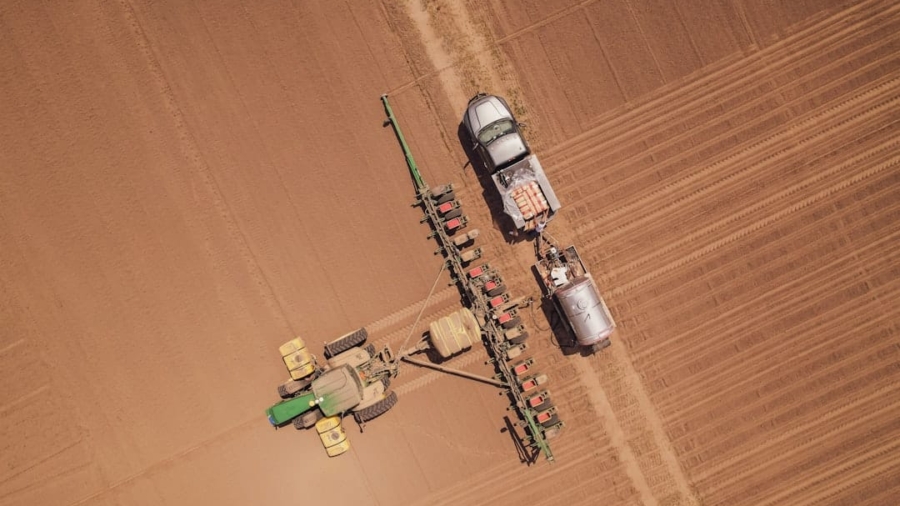The intersection of artificial intelligence (AI) and environmental conservation has emerged as a pivotal frontier in the fight against climate change and biodiversity loss. As the world grapples with the consequences of deforestation, habitat destruction, and climate change, innovative solutions are urgently needed to restore ecosystems and promote sustainable land management. AI technologies are increasingly being harnessed to enhance reforestation efforts, offering unprecedented capabilities in data analysis, predictive modeling, and resource optimization.
By leveraging vast amounts of ecological data, AI can help identify the most effective strategies for restoring degraded landscapes and ensuring the resilience of ecosystems. The application of AI in reforestation is not merely a technological advancement; it represents a paradigm shift in how we approach environmental restoration. Traditional methods often rely on manual labor and limited data, which can lead to inefficiencies and suboptimal outcomes.
In contrast, AI-driven approaches can analyze complex ecological patterns, predict future changes, and optimize planting strategies based on real-time data. This integration of technology into ecological restoration efforts holds the promise of accelerating recovery processes, enhancing biodiversity, and ultimately contributing to a more sustainable future for our planet.
Key Takeaways
- AI is revolutionizing reforestation and ecosystem restoration by providing innovative solutions to complex environmental challenges.
- AI plays a crucial role in monitoring and predicting ecosystem health, allowing for proactive interventions to prevent degradation.
- Precision tree planting and seedling selection are enhanced by AI, leading to more efficient and effective reforestation efforts.
- AI enables efficient resource management in reforestation projects, optimizing the use of resources such as water, soil, and manpower.
- The combination of AI and drone technology is transforming aerial reforestation, making it faster, more accurate, and cost-effective.
The Role of AI in Monitoring and Predicting Ecosystem Health
Monitoring ecosystem health is a critical component of effective reforestation and restoration efforts. AI technologies, particularly machine learning algorithms, have revolutionized the way we collect and analyze ecological data. Remote sensing technologies, such as satellite imagery and drones equipped with advanced sensors, generate vast amounts of data on vegetation cover, soil health, and water availability.
AI can process this data at an unprecedented scale, identifying patterns and trends that would be impossible for human analysts to discern. For instance, researchers have developed AI models that can predict forest health by analyzing satellite images over time. These models can detect early signs of stress in trees, such as changes in leaf color or density, which may indicate disease or drought conditions.
By providing timely insights into ecosystem health, AI enables conservationists to take proactive measures to mitigate threats before they escalate. This predictive capability is particularly valuable in regions vulnerable to climate change, where rapid shifts in environmental conditions can have devastating effects on local ecosystems.
AI in Precision Tree Planting and Seedling Selection

Precision tree planting is a critical aspect of successful reforestation initiatives. The selection of appropriate tree species and planting locations can significantly influence the survival rates of seedlings and the overall success of restoration projects. AI technologies are being employed to enhance these processes by analyzing environmental variables such as soil composition, moisture levels, and microclimate conditions.
Machine learning algorithms can process historical data on tree growth and survival rates in various conditions to recommend the best species for specific sites. For example, a project in Brazil utilized AI to analyze data from thousands of previous reforestation efforts to identify which tree species thrived under different environmental conditions. This information allowed project managers to select species that were not only well-suited to the local climate but also beneficial for biodiversity and ecosystem services.
Moreover, AI can optimize planting patterns by analyzing spatial data to determine the most effective arrangement of trees. This approach minimizes competition for resources among seedlings and maximizes their chances of survival. By employing AI-driven precision planting techniques, reforestation projects can achieve higher success rates while also promoting healthier ecosystems.
Using AI for Efficient Resource Management in Reforestation Projects
Resource management is a crucial aspect of any reforestation initiative, as it directly impacts the sustainability and effectiveness of restoration efforts. AI technologies can streamline resource allocation by analyzing data on water availability, soil nutrients, and labor requirements. This optimization ensures that resources are used efficiently, reducing waste and maximizing the impact of reforestation activities.
For instance, AI-driven models can predict water needs for newly planted trees based on local climate data and soil moisture levels. By accurately forecasting irrigation requirements, project managers can allocate water resources more effectively, ensuring that seedlings receive adequate hydration without overusing water supplies. This is particularly important in arid regions where water scarcity poses significant challenges to reforestation efforts.
Additionally, AI can assist in workforce management by analyzing labor needs based on project scale and complexity. By predicting peak labor demands during planting seasons or maintenance activities, project managers can optimize staffing levels and reduce costs associated with labor shortages or overstaffing. This efficient resource management not only enhances the viability of reforestation projects but also contributes to their long-term sustainability.
AI and Drone Technology for Aerial Reforestation
The integration of drone technology with AI has opened new avenues for aerial reforestation efforts. Drones equipped with advanced imaging sensors can cover large areas quickly, capturing high-resolution images that provide valuable insights into landscape conditions. When combined with AI algorithms, these images can be analyzed to identify suitable planting sites and monitor progress over time.
One innovative application of drone technology is the use of seed-bombing techniques, where drones disperse seed pods over large areas of degraded land. AI algorithms can optimize flight paths based on terrain analysis and environmental conditions, ensuring that seeds are distributed evenly and effectively. This method not only accelerates the reforestation process but also reduces the labor-intensive nature of traditional planting methods.
Furthermore, drones equipped with thermal imaging sensors can monitor plant health by detecting variations in temperature that may indicate water stress or disease. By providing real-time feedback on ecosystem conditions, drones enable conservationists to respond swiftly to emerging threats, ensuring that reforestation efforts remain on track.
AI in Predicting and Mitigating Climate Change Effects on Ecosystems

Climate change poses significant challenges to ecosystems worldwide, leading to shifts in species distributions, altered precipitation patterns, and increased frequency of extreme weather events. AI technologies are playing a crucial role in predicting these changes and developing strategies to mitigate their impacts on ecosystems. Machine learning models can analyze historical climate data alongside ecological variables to forecast how specific ecosystems will respond to future climate scenarios.
For example, researchers have used AI to model the potential impacts of rising temperatures on forest composition in various regions. These predictions allow conservationists to identify vulnerable areas and prioritize them for restoration efforts.
By simulating different management scenarios using predictive models, conservationists can evaluate the potential outcomes of various interventions. This data-driven approach enables more informed decision-making and increases the likelihood of successful adaptation strategies.
Ethical Considerations and Challenges in AI-driven Reforestation
While the potential benefits of AI in reforestation are substantial, ethical considerations must be addressed to ensure responsible implementation. One significant concern is the potential for bias in AI algorithms, which may arise from training data that does not adequately represent diverse ecological conditions or species interactions. If not carefully managed, biased algorithms could lead to suboptimal species selection or misallocation of resources.
Additionally, there is a risk that reliance on technology could overshadow traditional ecological knowledge and community involvement in reforestation efforts. Engaging local communities is essential for understanding specific ecological contexts and ensuring that restoration initiatives align with cultural values and practices. Striking a balance between technological innovation and community engagement is crucial for fostering successful reforestation projects.
Another challenge lies in data privacy and ownership issues related to ecological data collection. As organizations increasingly rely on AI-driven tools for monitoring ecosystems, questions arise about who owns the data generated and how it should be used. Establishing clear guidelines for data sharing and usage is essential to promote transparency and collaboration among stakeholders involved in reforestation efforts.
The Potential Impact of AI in Reforestation and Ecosystem Restoration
The integration of artificial intelligence into reforestation and ecosystem restoration represents a transformative opportunity to address some of the most pressing environmental challenges facing our planet today. By harnessing the power of data analysis, predictive modeling, and advanced technologies like drones, we can enhance our understanding of ecosystems and improve the effectiveness of restoration initiatives. As we continue to explore the potential applications of AI in this field, it is essential to remain mindful of ethical considerations and challenges that may arise.
By fostering collaboration between technologists, ecologists, and local communities, we can ensure that AI-driven solutions are implemented responsibly and equitably. Ultimately, the potential impact of AI in reforestation extends beyond mere technological advancement; it embodies a commitment to restoring our planet’s ecosystems for future generations. Through innovative approaches that combine science with community engagement, we can pave the way for a more sustainable relationship with our environment—one that prioritizes both ecological health and human well-being.
In a related article discussing the role of technology in environmental conservation, com/how-smartwatches-are-enhancing-connectivity/’>How Smartwatches Are Enhancing Connectivity explores the ways in which wearable devices are being used to monitor and track environmental data.
This innovative approach to data collection could potentially be applied to the field of reforestation and ecosystem restoration, allowing for more efficient and effective conservation efforts. By leveraging the power of technology, we can work towards a more sustainable future for our planet.
FAQs
What is AI?
AI, or artificial intelligence, refers to the simulation of human intelligence in machines that are programmed to think and act like humans. This includes tasks such as learning, problem-solving, and decision-making.
What is reforestation and ecosystem restoration?
Reforestation is the process of planting trees in areas where forests have been depleted or destroyed. Ecosystem restoration involves the repair and renewal of ecosystems that have been degraded or destroyed, including forests, wetlands, and grasslands.
How can AI be used in reforestation and ecosystem restoration?
AI can be used in reforestation and ecosystem restoration in various ways, including analyzing data to identify the best locations for planting trees, monitoring and managing tree growth, and predicting and preventing deforestation and forest degradation.
What are the benefits of using AI in reforestation and ecosystem restoration?
Using AI in reforestation and ecosystem restoration can lead to more efficient and effective restoration efforts, better monitoring and management of forests and ecosystems, and improved decision-making based on data and analysis.
Are there any challenges or limitations to using AI in reforestation and ecosystem restoration?
Challenges and limitations to using AI in reforestation and ecosystem restoration may include the cost of implementing AI technology, the need for accurate and reliable data, and the potential for AI to replace human labor in restoration efforts.

